May 14th. There are a couple of ways to reach the Tatacoa Desert, which lies on the far side of the Río Magdalena: either by crossing an old, decommissioned railway bridge or by taking a barge.
We’d read reports of lighter vehicles crossing the bridge without issue, so we headed that way. Access was just a few kilometres off the main road, down a bumpy dirt track. First, we had to drive through a tunnel—just big enough for us—its ceiling alive with hanging bats. On the other side, our path was blocked by the car of three little old ladies who had come to check things out. Seeing us, they immediately waddled back from the mid point, waving at us, emphatically declaring the bridge unsafe for a truck our size. It felt like a guardian angel moment. Funny, really—we’d just driven 20 minutes down a remote road without seeing another soul, and suddenly these women were here, giving us what felt like a sign. We took their warning seriously.
We walked the bridge to assess it ourselves. There were definite signs of wear, and the risk of getting stuck or needing a recovery just wasn’t worth it. So we reversed back through the tunnel and turned around. The ladies were delighted, waving and snapping photos of us as we passed.

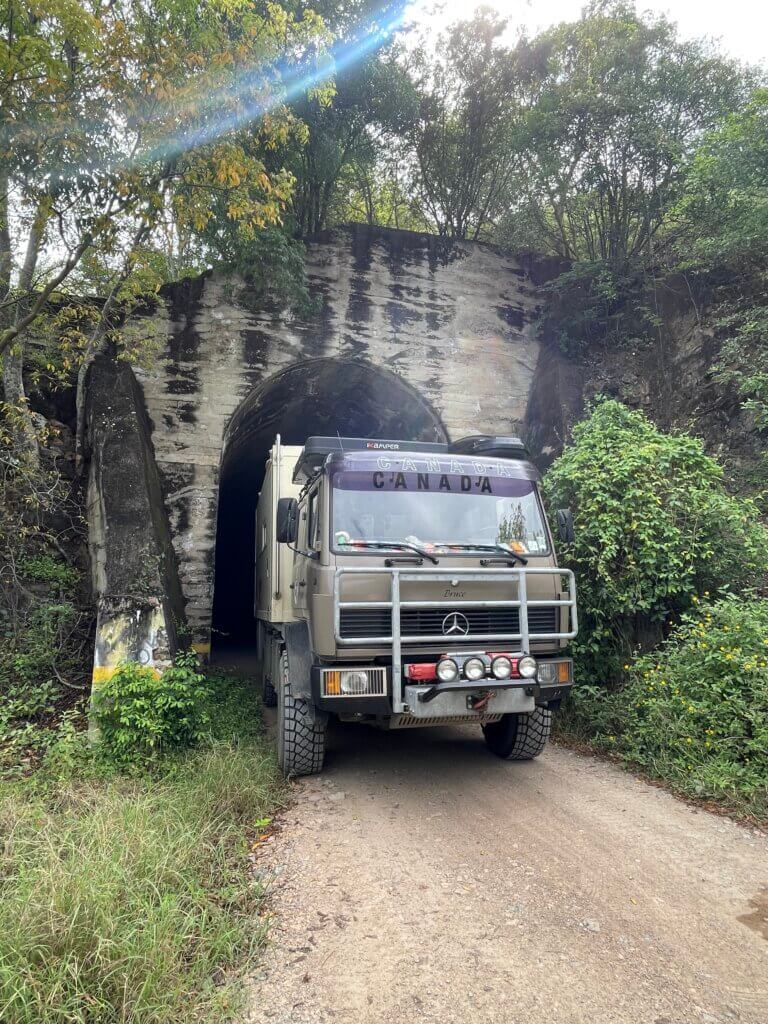
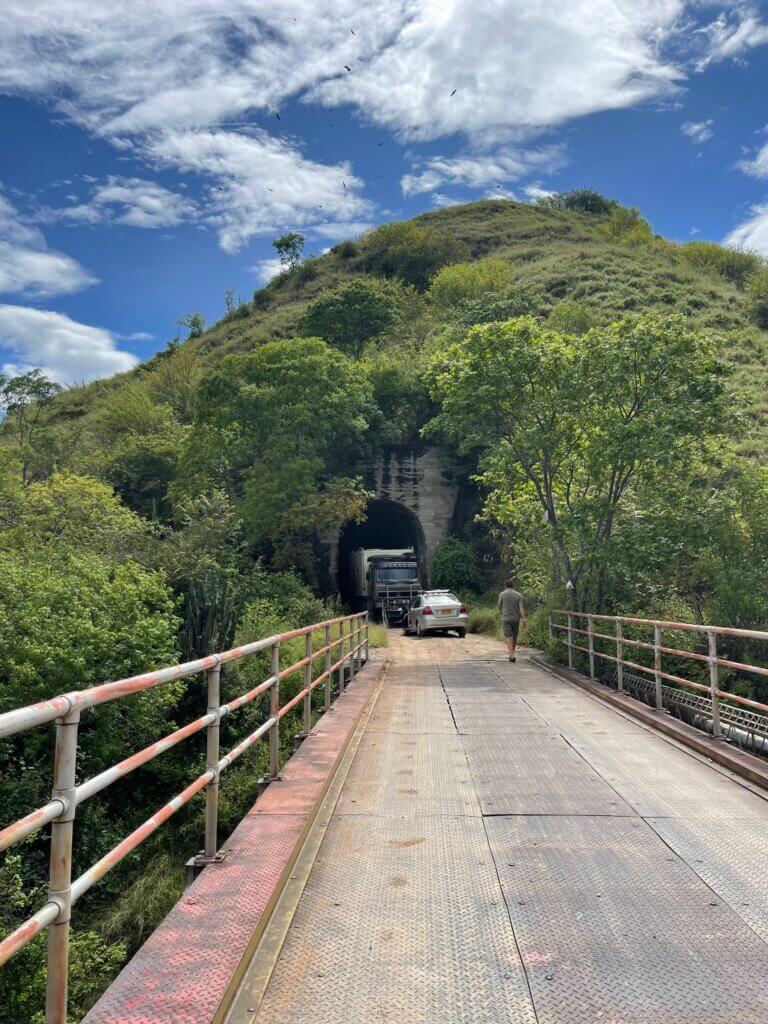
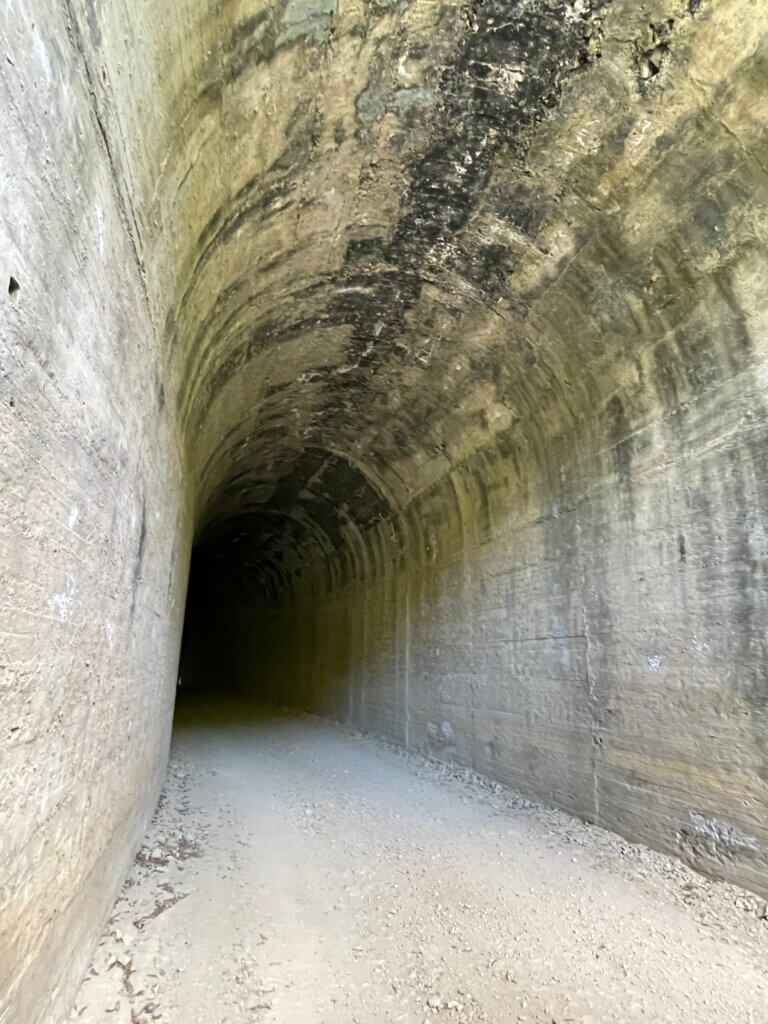
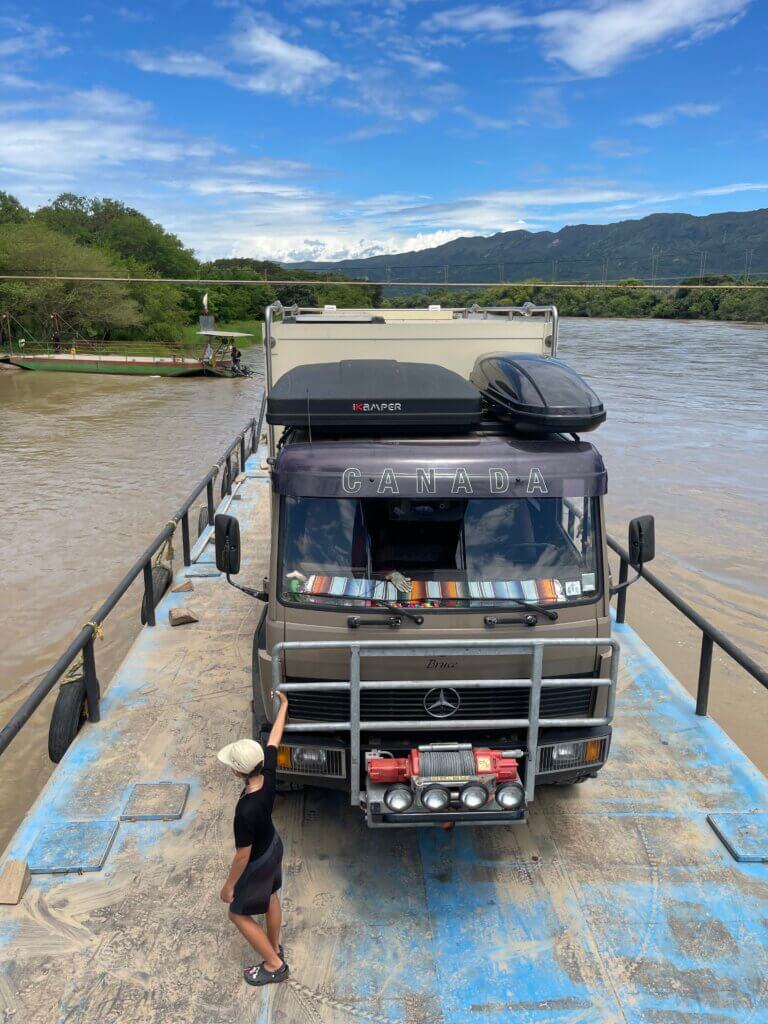
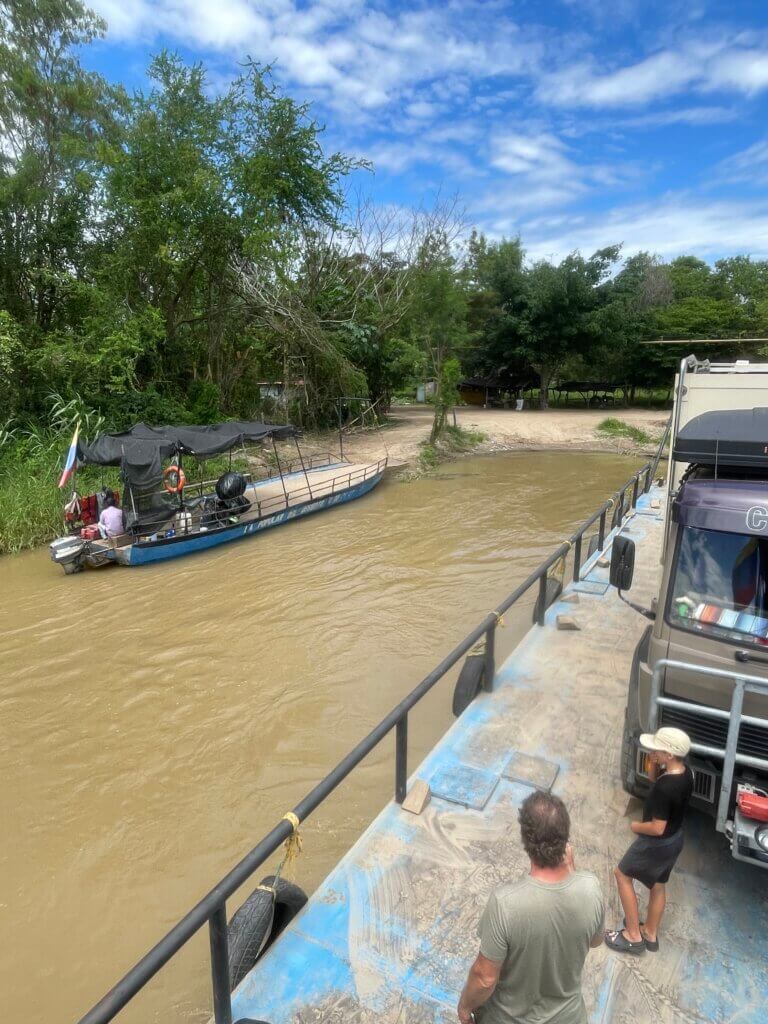
Plan B was to take the ferry about 30 km further downriver. And there it was, on the dusty banks of the fast-flowing, muddy Magdalena River. For 60,000 COP (about $20 CAD), we crossed—easy, safe, and well worth the peace of mind.
Not far from the crossing, we passed through a tiny pueblo, really just a few dusty streets and maybe 100 residents, when we spotted a sign for the Tatacoa Natural History Museum. Entry was 53,000 COP (about $17 CAD) for all of us, and it turned out to be possibly the best museum we’ve visited so far!
It’s small, we were the only visitors, so we had a private Spanglish tour. Everything was very clear and engaging. The museum tells the story of two brothers, taught by their grandfather, who grew up to became Palentologists. With funding from a former astronaut from the Apollo mission, one of the brothers, Juan, returned and built this research lab and museum in his home ‘town’.
Tatacoa is rich in geological history, with many fossil discoveries, some species endemic to the region. We were guided through the history of how, when, and where the fossils were found. In the lab, we examined beautifully colored crystals of petrified wood under a microscope, saw a million-year-old termite encased in amber, held a real megalodon tooth, an ancient Balinese bone carving found locally, and inspected a porous meteorite rock. Juan also showed us about a complete giant sloth skeleton his team uncovered, perfectly preserved for centuries in the mud.
The kids were blown away. They love this stuff, we all walked away feeling fascinated with plenty to talk about as we imagined what this dry dusty place would have looked like millions of years ago.
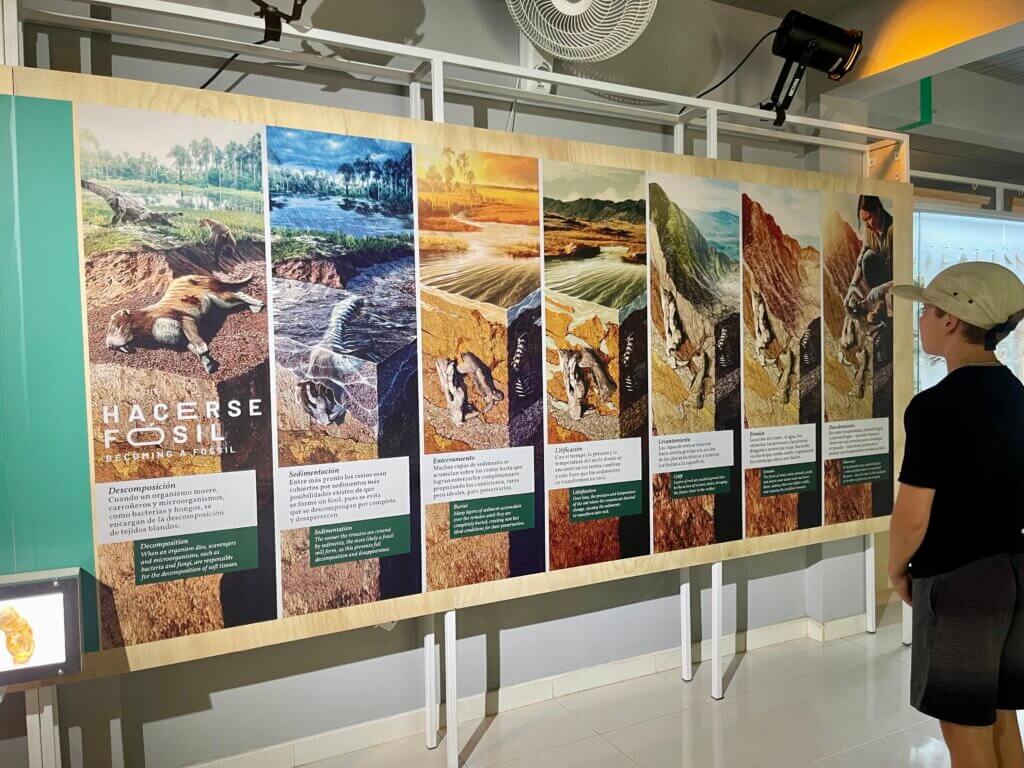
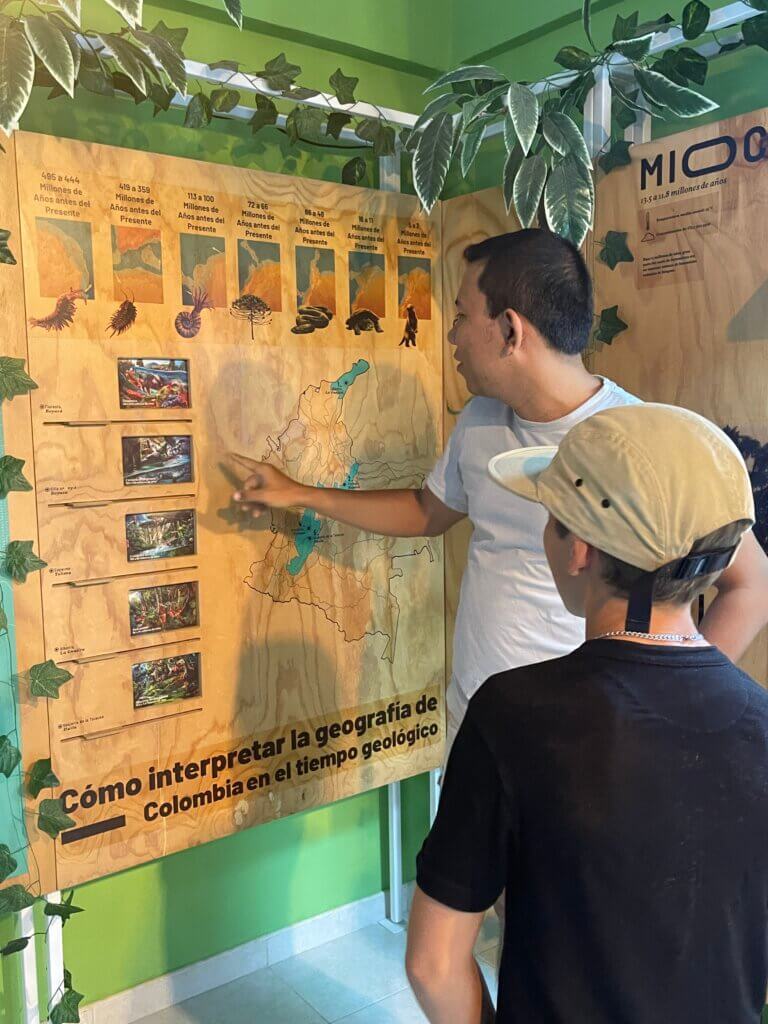
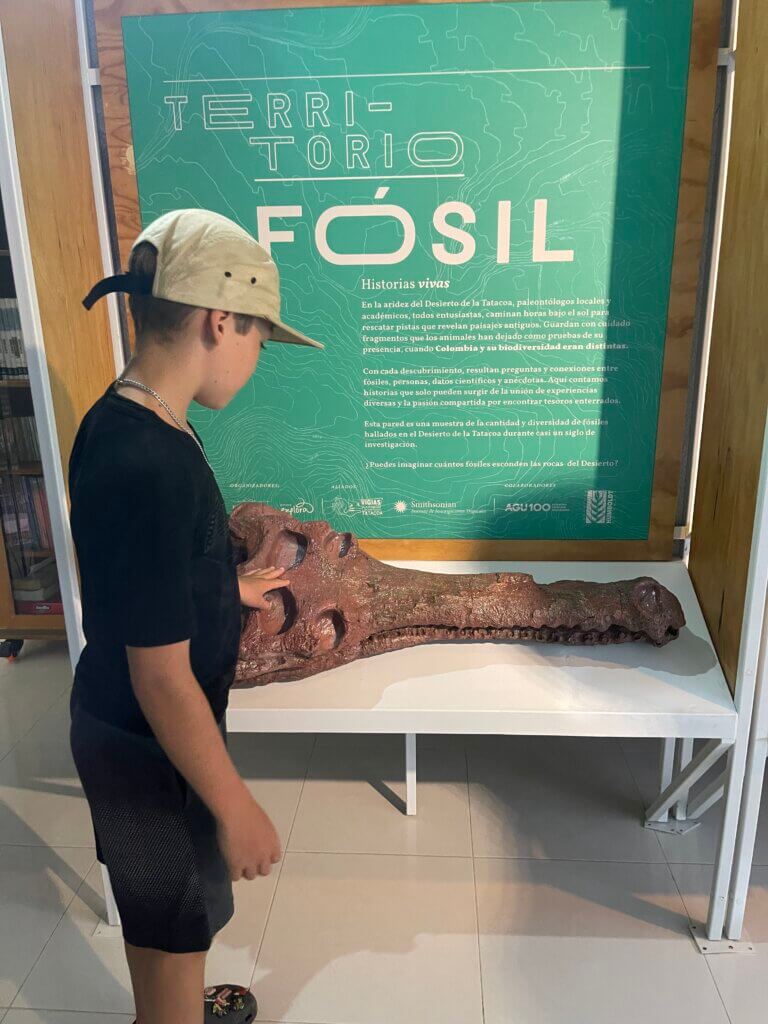
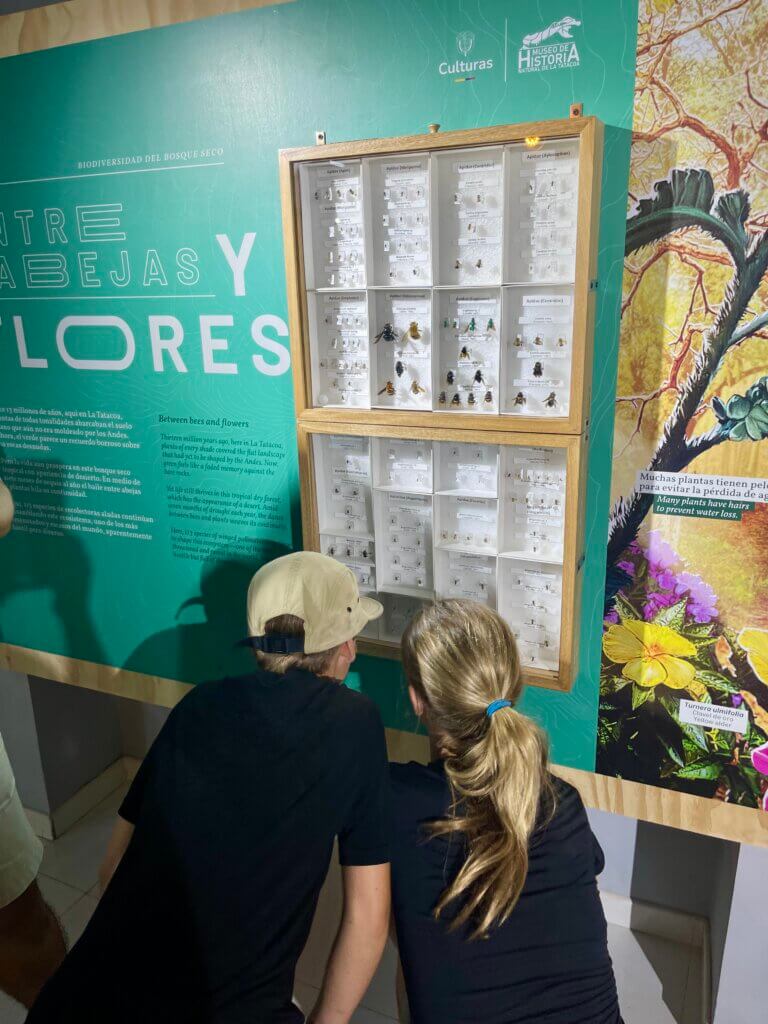
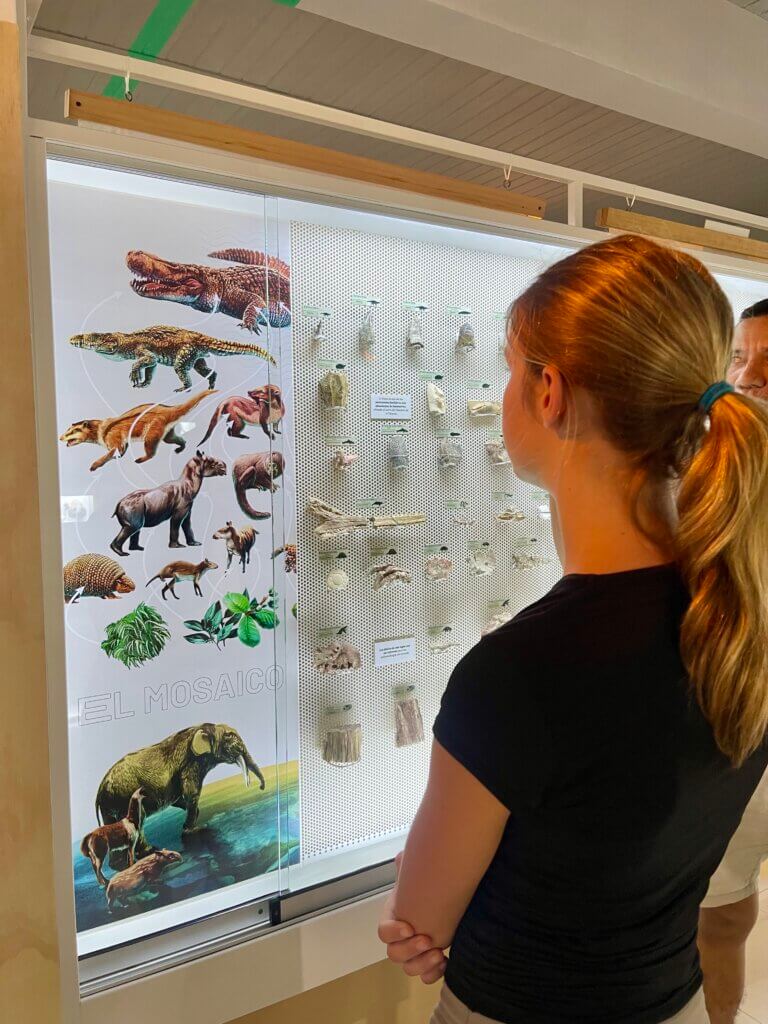
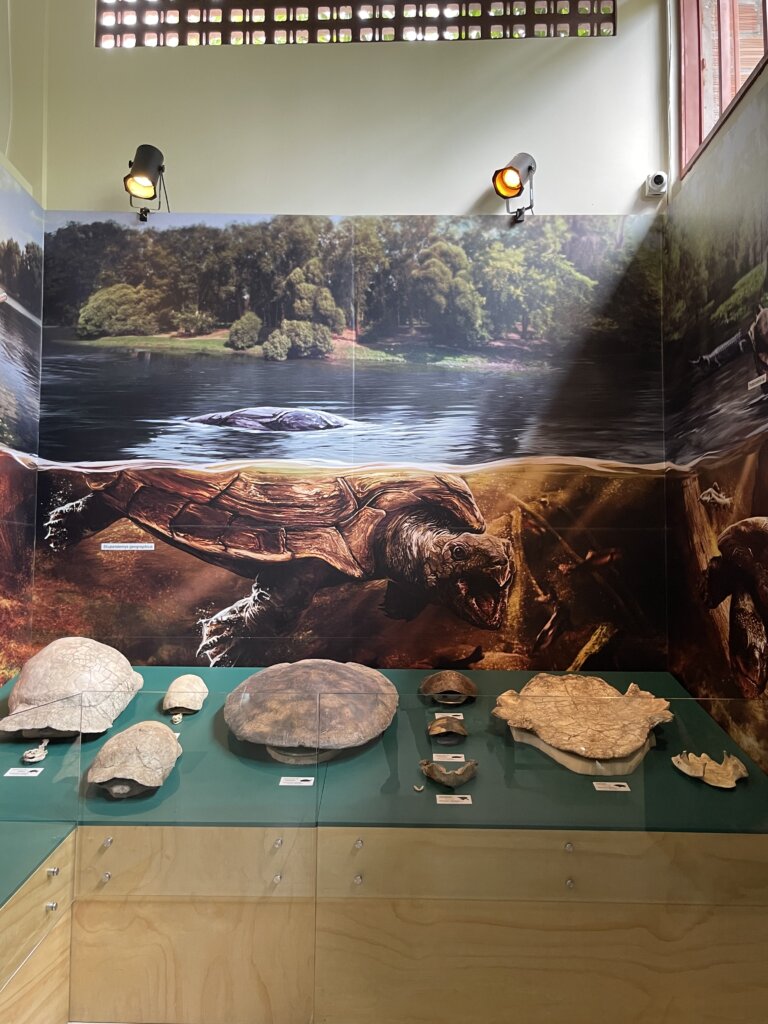
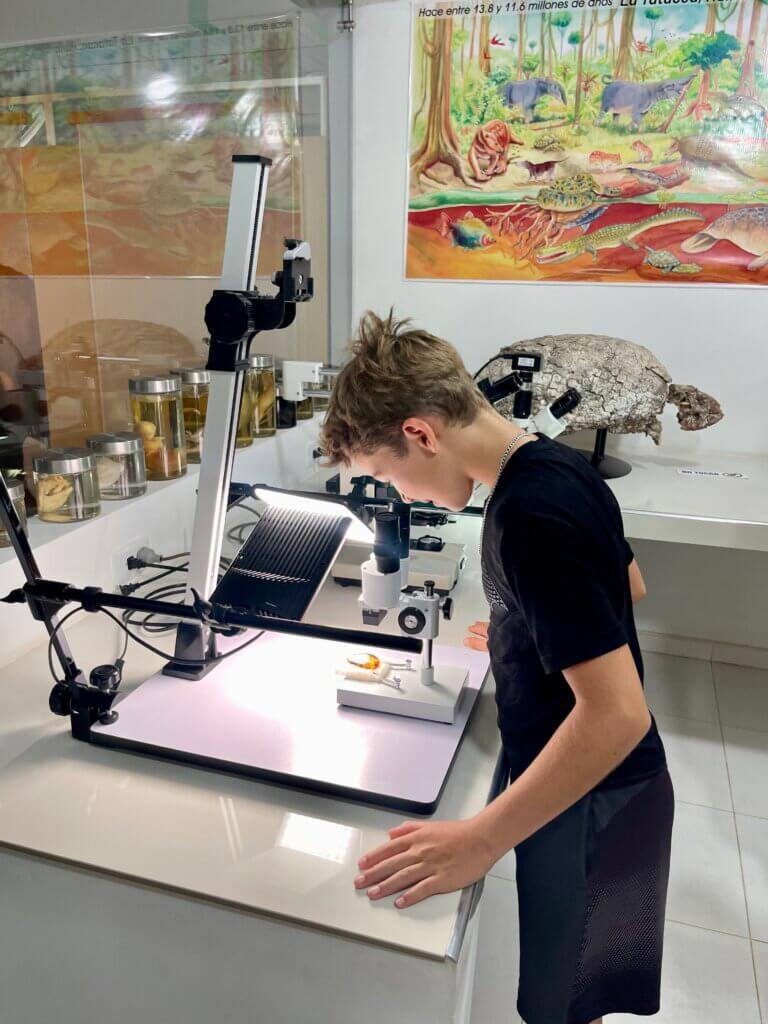
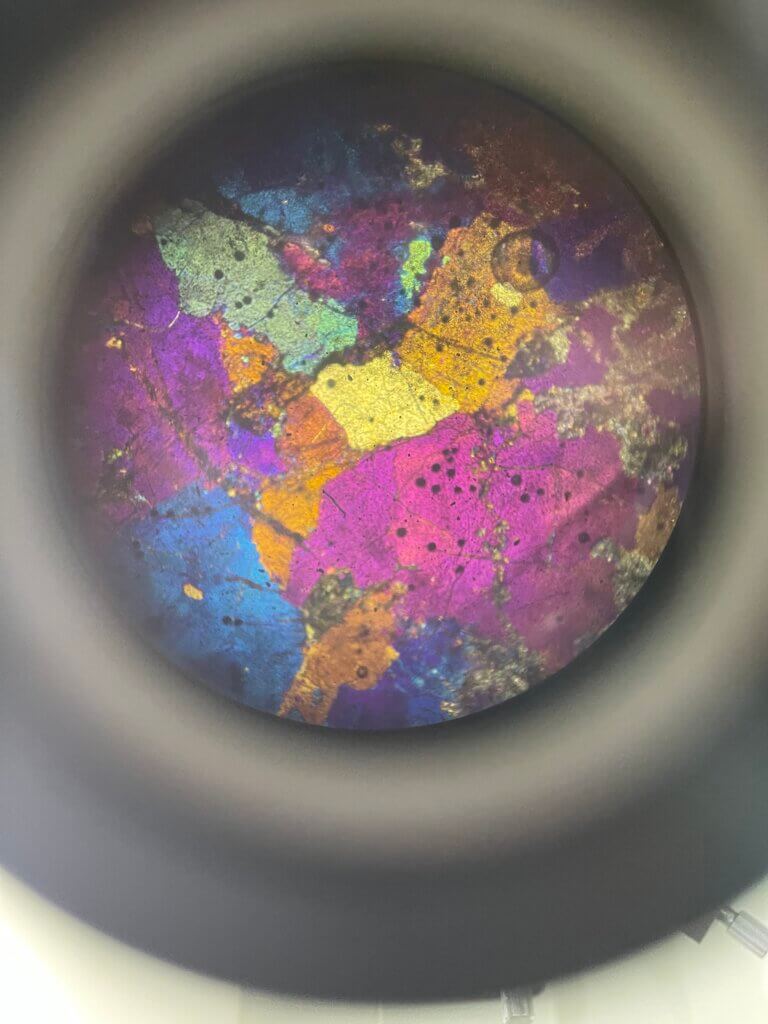
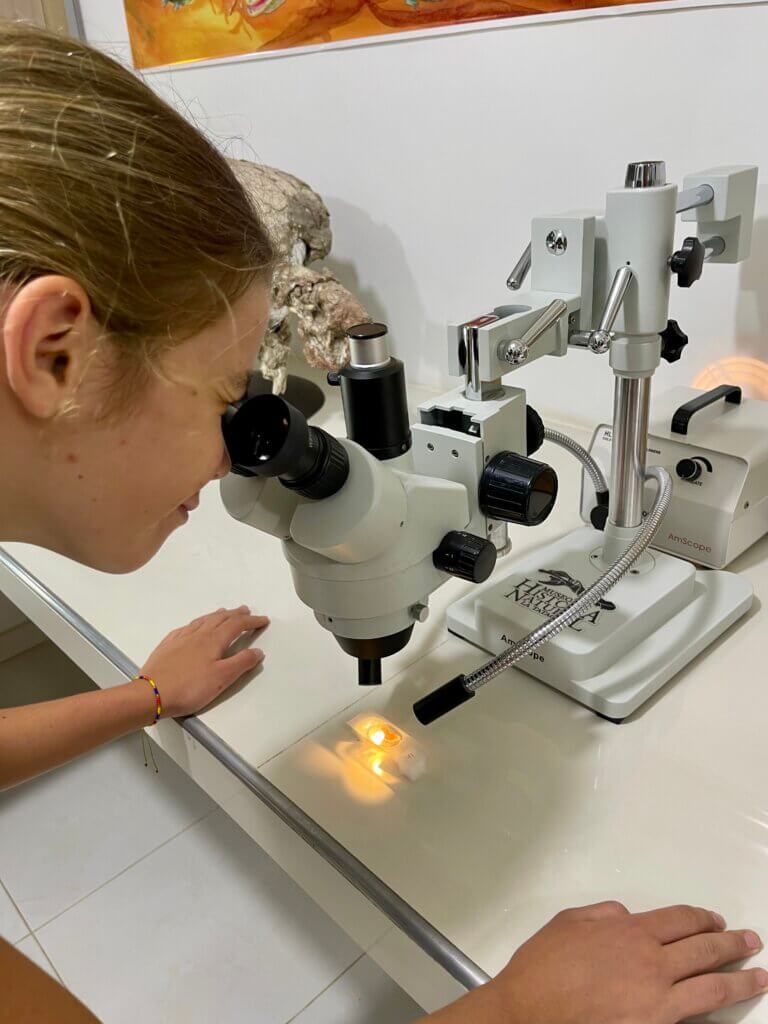

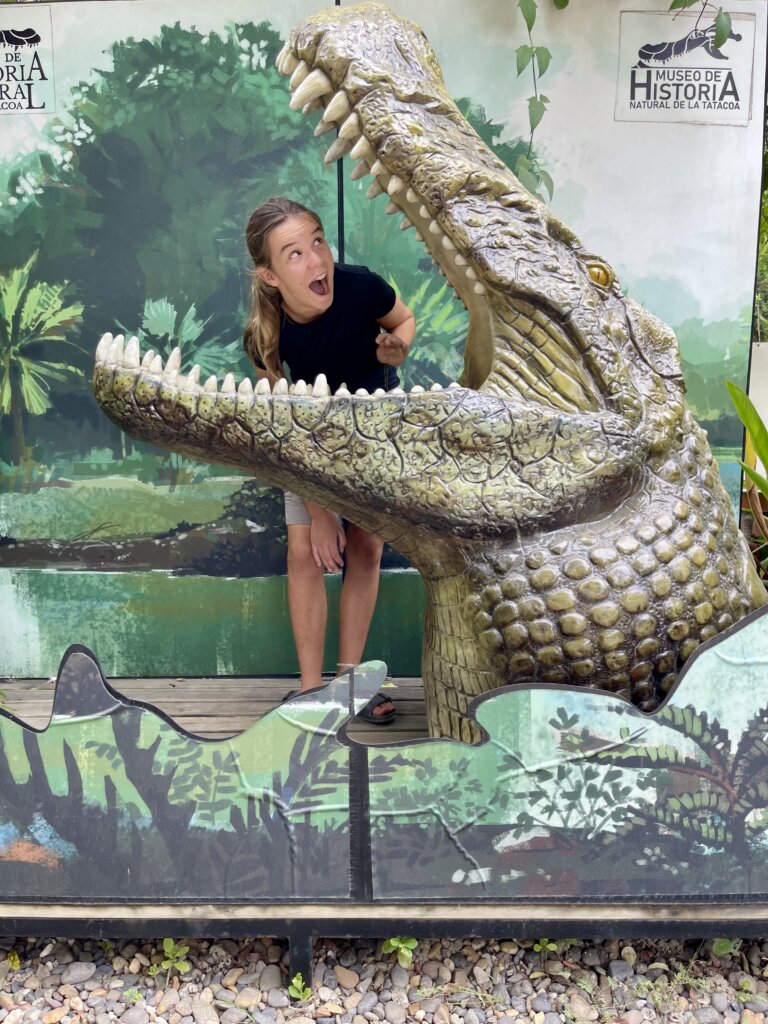
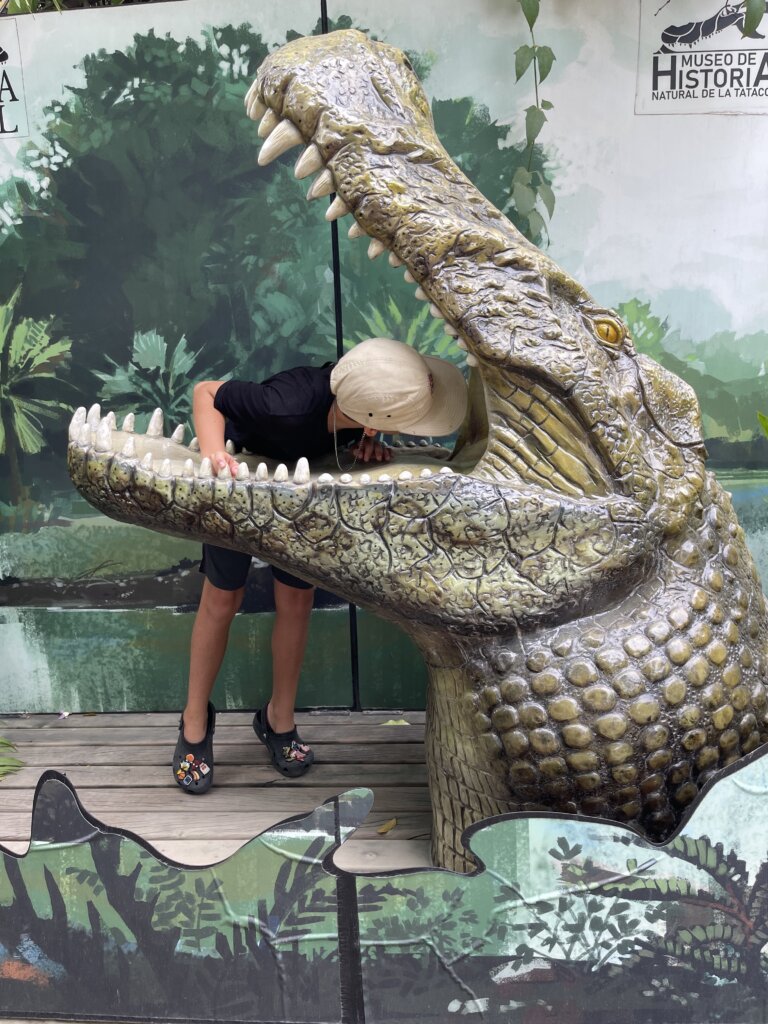

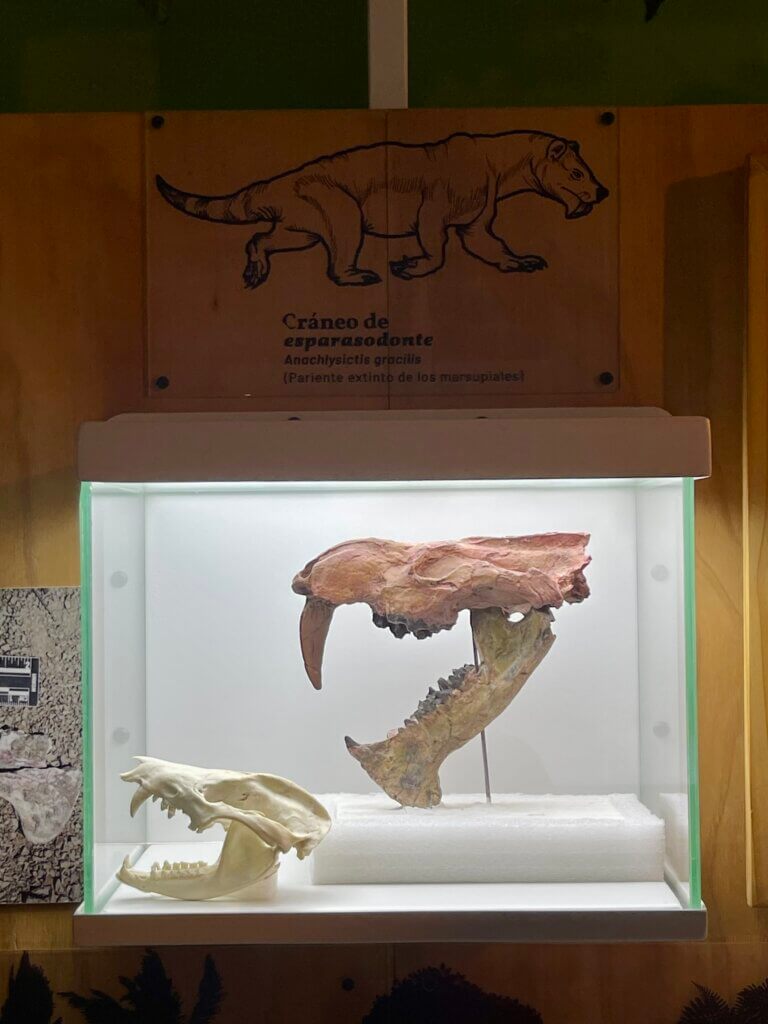
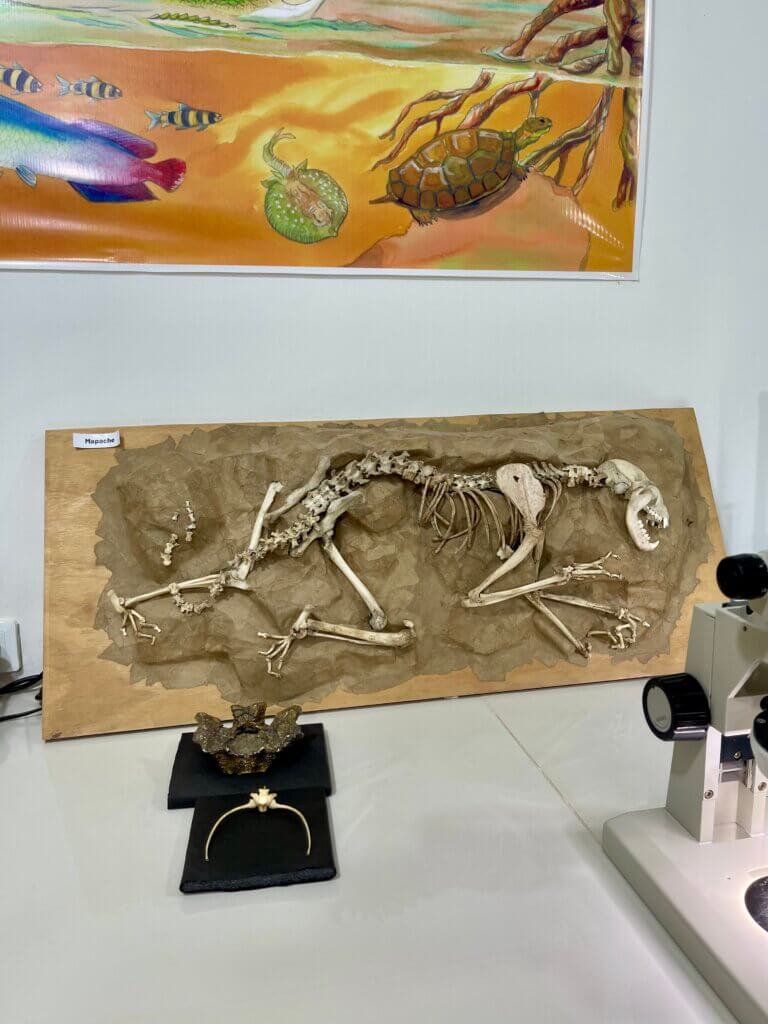

tatacoa desert
As for the Tatacoa Desert itself—it wasn’t quite what we expected. Maybe I’m jaded, but after exploring the vast national parks of the U.S., this little patch of dry terrain didn’t compare. Far from city lights, it’s a popular place for stargazers. We drove in, made lunch, and left. Preferring to imagine how life must have been back in the Cretaceous Period.
As night crept in, we pushed south another 60 km before calling it at a gas station for the night. 10,000 COP, we got a safe place to park, hot showers, and a security guard on duty.
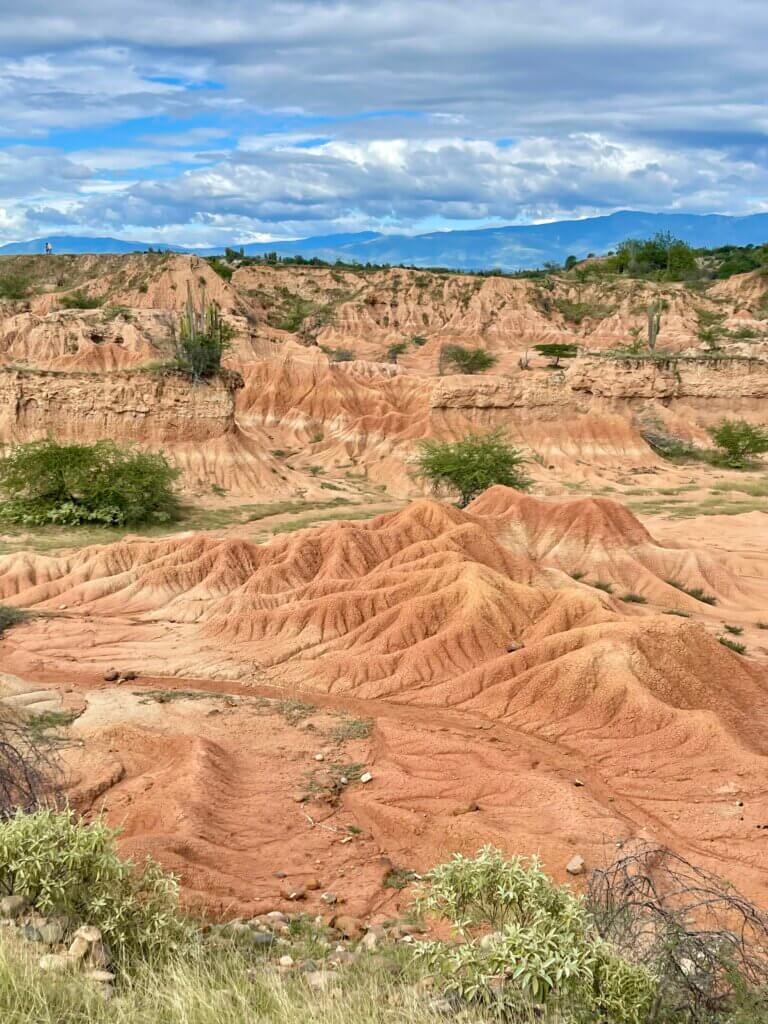

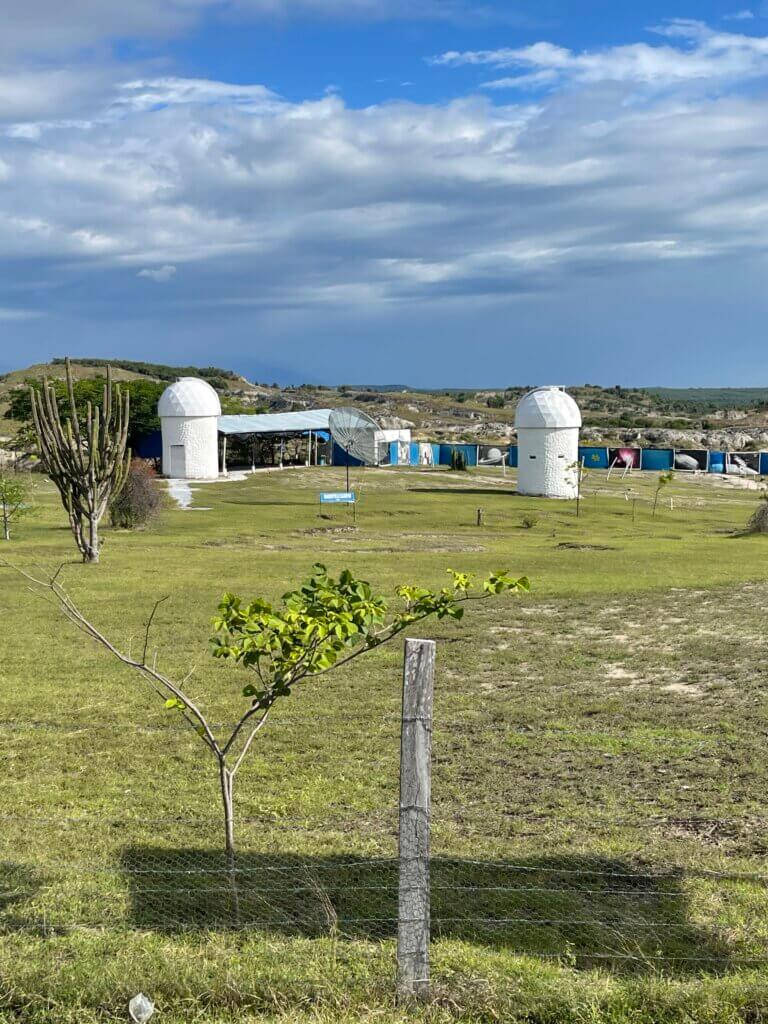
san augustin
May 16th & 17th. Further south, we climbed into the rainy hills of San Agustín, planning to spend a day exploring pre-Columbian ruins—carved stone statues honouring the dead.
We camped on the soggy lawn of a popular campground perched at the top of a steep, single-lane road. With 4WD engaged, I silently hoped we wouldn’t slip or meet an oncoming car. Thankfully, neither happened.
But the rain was relentless, and our motivation to pay $100 USD for the four of us to walk through a wet forest to see ancient headstones evaporated. Instead, while the kids did schoolwork, Tim and I sat down to plan our route through Ecuador. Originally, it was supposed to be a quick dash, but the more we research, the more gems we find—amazing hikes, beautiful parks and even the possibility of visiting the Galápagos Islands.
So San Agustín was a bust. We packed up, made it safely down the hill, and headed for Mocoa, where we’d meet up with Mario and Wenke to tackle Colombia’s infamous Death Road.
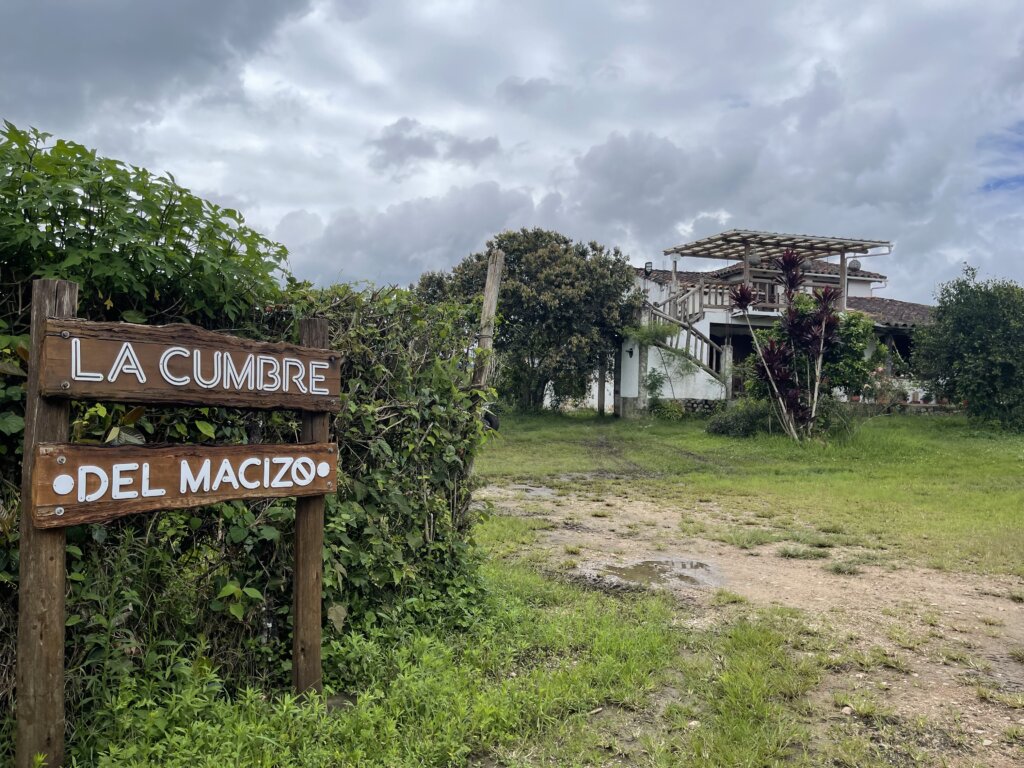
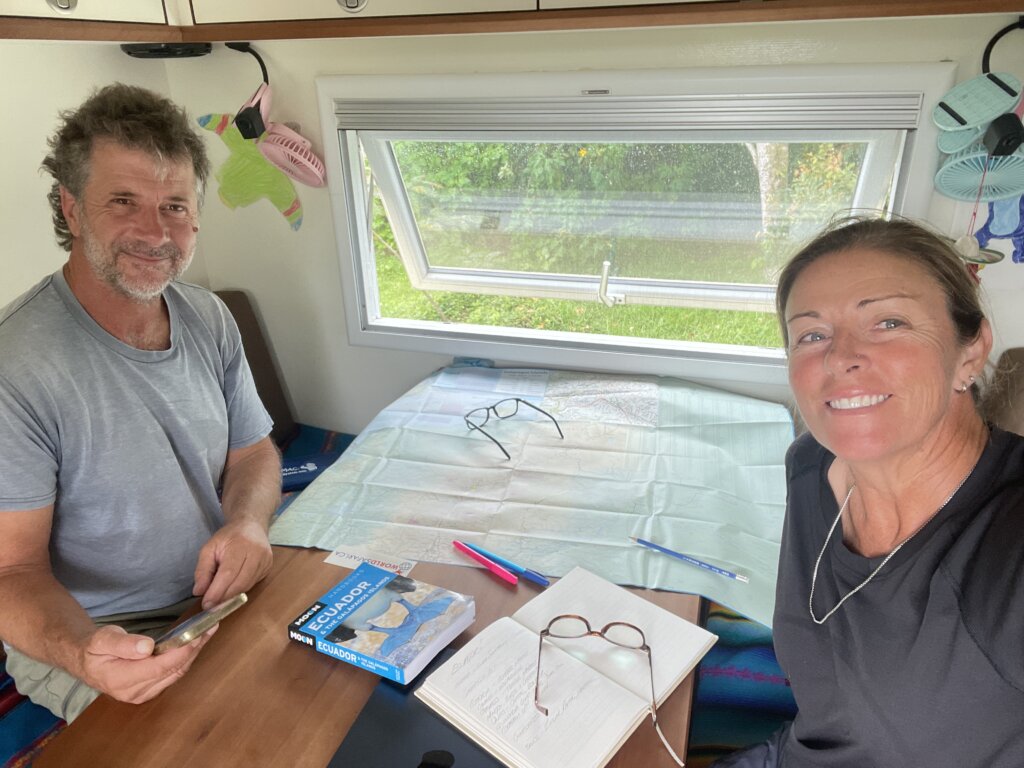
we better go find out why it has this name…

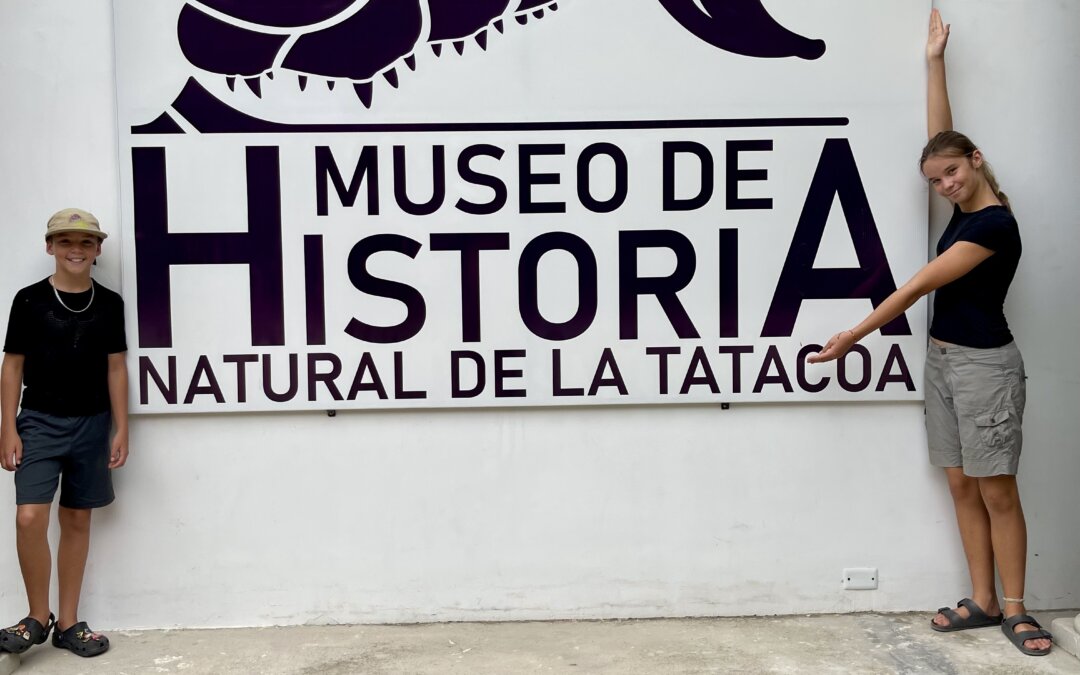
Death Road!!!! Tell us if you don’t make it…😏
Good choice on the bridge. They aren’t making anymore of you.
Good luck on the death road. I would look for the alternate choice “ The Life Road”.